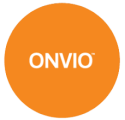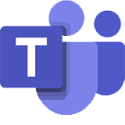Navigating Employee Benefits: Maximizing the Value of Your Workplace Perks

Employee benefits are an essential part of your overall compensation package. Beyond your salary, they offer valuable perks that can enhance your financial well-being and provide important protections. However, navigating through the maze of available benefits can be overwhelming. In this article, we'll explore how you can effectively navigate your employee benefits to maximize their value. Whether you're a new employee or looking to optimize your existing benefits, these strategies will help you make the most of what your workplace offers.
Understand Your Benefits Package:
Begin by thoroughly understanding the benefits package provided by your employer. Review the employee handbook, benefit summaries, and related documents to familiarize yourself with the available options. Take note of benefits such as health insurance, retirement plans, life insurance, disability coverage, paid time off, and any additional perks offered by your company.
Assess Your Needs:
Evaluate your personal circumstances and determine which benefits are most relevant to your situation. Consider your age, health, family size, and long-term goals. For example, if you have dependents, a comprehensive health insurance plan with family coverage may be a priority. If retirement is on the horizon, focus on maximizing contributions to your employer-sponsored retirement plan.
Optimize Health Insurance Coverage:
Health insurance is typically one of the most significant employee benefits. Understand the different plans available to you, including the coverage, deductibles, copayments, and out-of-pocket maximums. Compare the plans based on your anticipated healthcare needs, including regular prescriptions, doctor visits, and any ongoing treatments. Don't overlook the option of opening a Health Savings Account (HSA) if your plan allows it, as it offers tax advantages and can help you save for future medical expenses.
Maximize Retirement Contributions:
Your employer-sponsored retirement plan, such as a 401(k) or 403(b), can be a powerful tool for building long-term financial security. Contribute at least enough to take full advantage of any employer match, as this is essentially free money. If possible, aim to maximize your contributions to the extent allowed by the plan. Remember that contributions to these retirement accounts are typically tax-deductible, providing immediate tax benefits.
Leverage Flexible Spending Accounts (FSAs) and Health Savings Accounts (HSAs):
If your employer offers FSAs or HSAs, take advantage of these tax-advantaged accounts. FSAs allow you to set aside pre-tax dollars for eligible healthcare expenses or dependent care costs. HSAs, on the other hand, are available to those enrolled in high-deductible health insurance plans and offer triple tax benefits: contributions are tax-deductible, earnings grow tax-free, and withdrawals are tax-free when used for qualified medical expenses. Use these accounts strategically to save money on taxes while managing your healthcare expenses.
Explore Other Insurance Options:
Evaluate any additional insurance options provided by your employer, such as life insurance and disability coverage. Assess whether the coverage amounts align with your needs and consider supplementing them with individual policies if necessary. Life insurance can provide financial security for your loved ones in case of your untimely passing, while disability coverage protects your income if you become unable to work due to injury or illness.
Take Advantage of Wellness Programs:
Many companies offer wellness programs aimed at promoting employee health and well-being. These programs often include gym memberships, wellness incentives, and resources for improving physical and mental well-being. Participating in these programs not only contributes to your overall health but can also lead to potential cost savings on health insurance premiums or other incentives.
Utilize Tuition Reimbursement and Professional Development:
If your employer provides tuition reimbursement or support for professional development, take advantage of these opportunities. Investing in your education and skill development can enhance your career prospects and potentially lead to higher earning potential. Explore programs, courses, or certifications that align with your professional goals and discuss reimbursement options with your employer.
Review and Update Your Benefits Regularly:
Employee benefits may change over time, so it's essential to review and update your choices periodically. Major life events such as marriage, having children, or changes in health status may warrant adjustments to your benefit selections. Stay informed about any policy changes, open enrollment periods, or new benefits introduced by your employer.
Seek Professional Advice:
Navigating employee benefits can be complex, especially when considering their impact on your taxes and overall financial picture. Consider consulting with a tax professional or financial advisor to ensure you're making informed decisions and optimizing your benefits to align with your financial goals.
Employee benefits are a valuable part of your compensation package, providing crucial protections and opportunities for financial well-being. By understanding your benefits, assessing your needs, and strategically utilizing the available options, you can maximize their value. Regularly review and update your choices to ensure they align with your changing circumstances and long-term goals. Remember, seeking professional guidance can help you make the most of your workplace perks and optimize your overall financial strategy.




